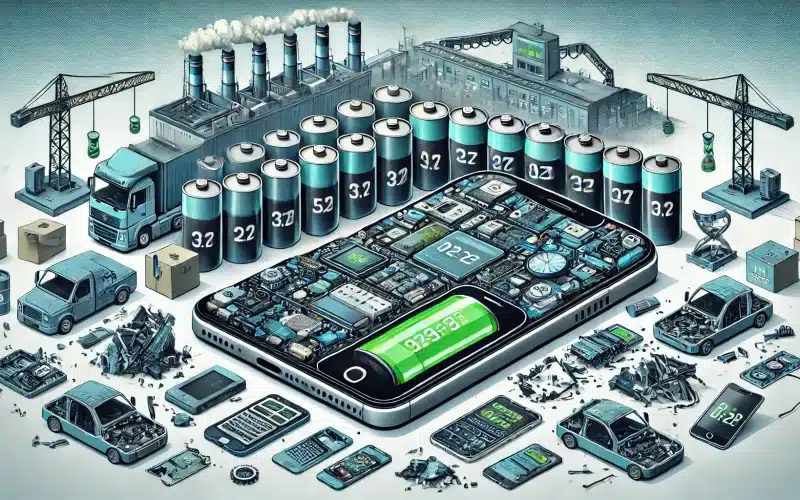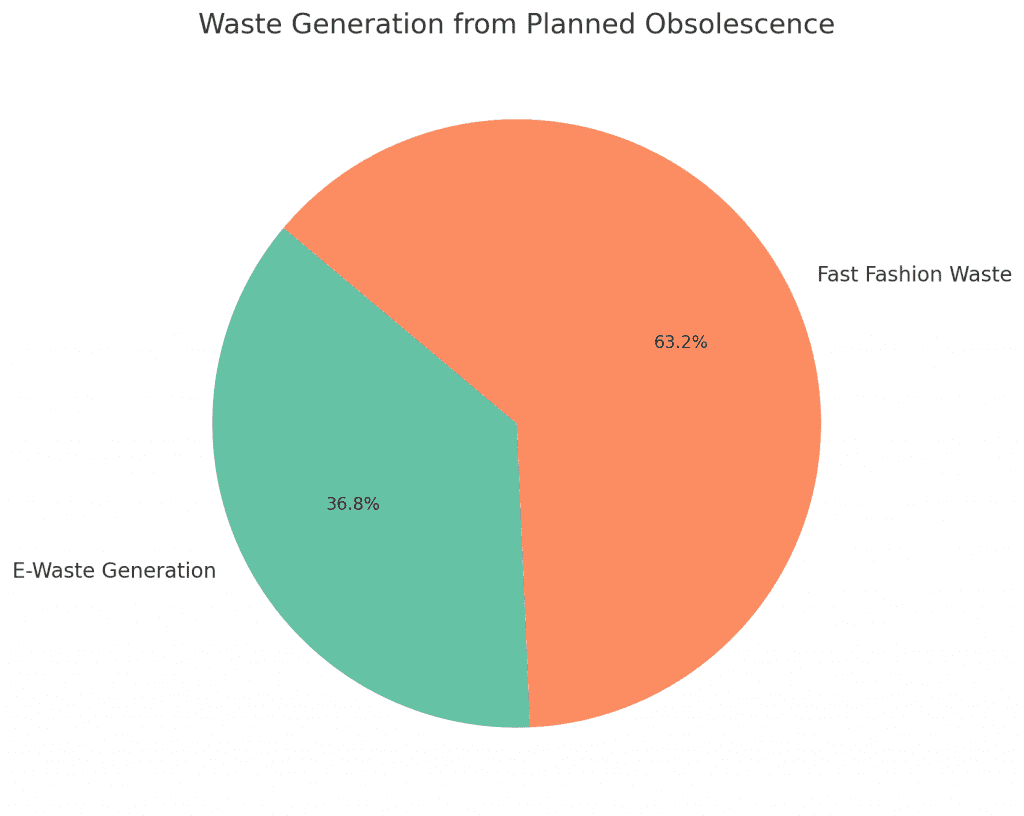
Planned obsolescence is a pervasive business strategy where products are designed with a limited lifespan, compelling consumers to replace them frequently. While this approach drives sales and fosters economic growth, it comes with a huge environmental and social costs. In contrast, sustainability emphasizes long-term resource efficiency and minimal environmental impact. This article explores the intricacies of planned obsolescence, its implications on sustainability, and potential pathways toward a more sustainable future.
The below video give you a brief overview of what planned obsolescence exactly is.
- 1 Understanding Planned Obsolescence
- 2 Statistics on Planned Obsolescence
- 3 Environmental Impact of Planned Obsolescence
- 4 Examples of Planned Obsolescence
- 5 Sustainable Alternatives
- 6 Examples of Sustainable Practices
- 7 Benefits of Sustainable Practices
- 8 Challenges to Overcoming Planned Obsolescence
- 9 Policy and Regulatory Measures
- 10 Corporate Initiatives
- 11 The Role of Consumers
- 12 Sources on planned obsolescence
Understanding Planned Obsolescence
Planned obsolescence manifests in various forms, each designed to push consumers towards repeated purchases. The main types include:
- Technical Obsolescence: This occurs when products become outdated due to rapid technological advancements. A prime example is the smartphone industry, where new models with advanced features render older versions obsolete.
- Style Obsolescence: Here, changes in fashion and trends make existing products undesirable. Fast fashion is a notable example, with brands frequently launching new collections to keep up with ever-changing trends.
- Functional Obsolescence: Products are deliberately designed to break down or wear out after a certain period. This is common in home appliances and electronics, where parts are difficult or expensive to replace, prompting consumers to buy new items.
Statistics on Planned Obsolescence
To grasp the scale and impact of planned obsolescence, consider the following statistics:
- E-Waste Generation: In 2020, the world generated 53.6 million metric tons of electronic waste, with only 17.4% being recycled properly (Global E-waste Monitor 2020).
- Smartphones: The average lifespan of a smartphone is about 2.5 years (Statista, 2021). Over 1.5 billion smartphones are sold annually, contributing significantly to e-waste (Statista, 2021).
- Fast Fashion: The fashion industry produces 92 million tons of waste annually and consumes 79 trillion liters of water (Ellen MacArthur Foundation). Moreover, 85% of all textiles go to the dump each year (UN Environment Program).
- Light Bulbs: LED bulbs last up to 25,000 hours compared to 1,000 hours for incandescent bulbs, reducing waste and energy consumption (U.S. Department of Energy).
- Home Appliances: The average lifespan of home appliances has decreased from around 10-15 years in the past to about 6-8 years now (National Association of Home Builders, 2021).
- Automobiles: Over-the-air updates can extend the lifespan of electric vehicles by 2-3 years on average, reducing the need for new vehicle production (International Energy Agency, 2021).
Environmental Impact of Planned Obsolescence
The environmental consequences of planned obsolescence are profound. Key areas of impact include:
- Resource Depletion: Frequent product replacements increase the demand for raw materials, accelerating the depletion of natural resources. For instance, the production of smartphones requires rare earth metals, which are finite and environmentally damaging to extract.
- Waste Generation: Products designed for short lifespans contribute to significant waste, often ending up in landfills. E-waste, in particular, contains hazardous materials that can contaminate soil and water.
- Energy Consumption: Manufacturing new products requires substantial energy, leading to higher carbon emissions and environmental degradation. The continuous production cycle perpetuates a high carbon footprint.
Examples of Planned Obsolescence
- Smartphones: Many smartphones are designed with non-replaceable batteries and components that become outdated within a few years. For example, Apple’s iPhone models often see annual updates, pushing consumers to upgrade frequently.
- Inkjet Printers: Printers often have a limited number of prints before they start malfunctioning or require expensive new ink cartridges. This design pushes users to buy new printers instead of repairing the old ones.
- Fast Fashion: Clothing brands release new collections rapidly, encouraging consumers to discard old clothes and buy new ones. Brands like Zara and H&M exemplify this model, with weekly or bi-weekly new arrivals.
- Light Bulbs: Traditional incandescent bulbs have a short lifespan, necessitating frequent replacements. This has been a long-standing example of functional obsolescence.

Sustainable Alternatives
To counter the effects of planned obsolescence, several sustainable strategies can be implemented:
- Durable Design: Creating products that last longer and can be easily repaired. For example, Fairphone designs modular phones with replaceable parts, allowing users to upgrade or repair their devices easily, thus extending their lifespan.
- Recycling and Upcycling: Promoting the recycling of materials and upcycling products to extend their usability. Companies like Epson offer EcoTank printers with refillable ink tanks, reducing waste and costs over time.
- Circular Economy: Encouraging a system where products are reused, repaired, and recycled, reducing the need for new resources. Patagonia promotes durable, high-quality clothing and offers repair services, encouraging customers to keep their items longer.
- Consumer Awareness: Educating consumers about the benefits of sustainable products and encouraging responsible purchasing decisions. This can drive demand for longer-lasting, repairable, and recyclable products.
Examples of Sustainable Practices
- Electronics:
- Framework Laptop: A modular laptop designed for easy repair and upgrades, reducing the need for frequent replacements. Users can replace or upgrade individual components like the battery, storage, and memory.
- Automobiles:
- Tesla: Provides over-the-air software updates for its electric vehicles, improving functionality and extending the lifespan without requiring new hardware. This approach reduces waste and enhances vehicle longevity.
- Home Appliances:
- Miele: Offers high-quality appliances with a long lifespan and provides spare parts for many years, ensuring products can be repaired rather than replaced. This commitment to durability reduces waste and resource consumption.
- Packaging:
- Loop: A zero-waste packaging initiative that offers reusable packaging for everyday products, reducing single-use plastic waste. Customers can return empty packaging, which is cleaned and reused.
Benefits of Sustainable Practices
Adopting sustainable practices offers numerous benefits:
- Environmental Conservation: Sustainable practices reduce resource depletion, waste generation, and carbon emissions. For example, LED bulbs last longer and consume less energy, leading to significant environmental savings.
- Economic Savings: Durable products and repairable designs can save consumers money in the long run. The initial higher cost is offset by reduced replacement and repair expenses.
- Improved Health: Reducing hazardous waste, such as e-waste, minimizes environmental contamination, which can have positive health impacts. Proper recycling and disposal practices mitigate harmful effects on human health.
- Enhanced Reputation: Companies that adopt sustainable practices can improve their reputation and attract environmentally conscious consumers. This can lead to increased customer loyalty and market share.
Challenges to Overcoming Planned Obsolescence
Despite the clear benefits, several challenges hinder the widespread adoption of sustainable practices:
- Consumer Behavior: Many consumers are accustomed to frequent upgrades and replacements, driven by marketing and societal trends. Changing this behavior requires significant awareness and education efforts.
- Economic Incentives: Companies often prioritize short-term profits over long-term sustainability. Encouraging businesses to adopt sustainable practices may require regulatory changes and economic incentives.
- Technological Barriers: Some products inherently have limited lifespans due to technological limitations. Developing more durable and repairable products may require significant investment in research and development.
- Infrastructure: Effective recycling and repair infrastructure are crucial for sustainable practices. In many regions, the necessary infrastructure is lacking or underdeveloped.
Policy and Regulatory Measures
Governments and regulatory bodies play a crucial role in promoting sustainability and addressing planned obsolescence:
- Right to Repair: Legislation that mandates manufacturers to provide spare parts, repair information, and tools can empower consumers to repair their products. The European Union has already introduced such laws for certain appliances.
- Extended Producer Responsibility (EPR): EPR policies hold manufacturers accountable for the entire lifecycle of their products, including disposal and recycling. This encourages companies to design more sustainable products.
- Tax Incentives: Providing tax incentives for companies that adopt sustainable practices can encourage more businesses to follow suit. This can include tax breaks for using recycled materials or investing in sustainable technologies.
- Public Awareness Campaigns: Governments can run campaigns to educate consumers about the environmental impact of planned obsolescence and the benefits of sustainable products. This can drive demand for eco-friendly alternatives.
Corporate Initiatives
Many companies are already taking steps to address planned obsolescence and embrace sustainability:
- Apple: Apple has introduced a recycling program where customers can trade in old devices for credit towards new purchases. Additionally, they have committed to using recycled materials in their products.
- Samsung: Samsung offers repair services and has committed to extending the lifespan of their products. They also have initiatives to recycle old devices responsibly.
- IKEA: IKEA promotes a circular economy by offering furniture take-back and recycling programs. They also design products with sustainability in mind, using renewable and recycled materials.
- Dell: Dell’s recycling program ensures that old electronics are disposed of responsibly. They also design products that are easier to disassemble and recycle.
The Role of Consumers
Consumers play a pivotal role in driving sustainability. By making informed choices and demanding sustainable products, they can influence market trends:
- Support Sustainable Brands: Choosing products from companies committed to sustainability can drive demand for eco-friendly alternatives. Consumers can research and support brands that prioritize durability and repairability.
- Extend Product Lifespan: Taking care of products and opting for repairs over replacements can reduce waste. Simple actions like regular maintenance and responsible usage can significantly extend the lifespan of products.
- Advocate for Change: Consumers can advocate for stronger regulations and policies that promote sustainability. Joining or supporting organizations that push for environmental legislation can amplify their impact.
- Educate and Inform: Sharing knowledge and raising awareness about the impacts of planned obsolescence and the benefits of sustainable practices can influence others. Community efforts and social media can be powerful tools for spreading the message.
Planned obsolescence presents rather huge challenges to sustainability, contributing to resource depletion, waste generation, and environmental degradation. However, by embracing sustainable practices, promoting durable designs, and supporting recycling initiatives, we can mitigate these impacts. Governments, businesses, and consumers all have crucial roles to play in fostering a more sustainable future.
